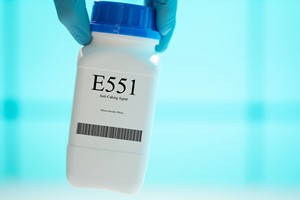Three months of supplementation with a prebiotic blend of inulin and oligofructose may significantly improve measures of frailty in the elderly, says a new double-blind, randomized, controlled trial with 200 people.
The inulin-oligofructose combination was associated with “notable increases” in a range of measures related to frailty, including body fat percentage, walking speed and grip strength, according to findings published in the Journal of Clinical Investigation.
The prebiotic supplement was also associated with changes in the composition of the gut microbiota and in microbial metabolites, reported scientists from China’s Air Force Medical University in Xi’an.
“This clinical trial showed that the diversity, composition and function of the intestinal microbiome varied with frailty status in community-dwelling older adults in China,” they wrote. “Intestinal microbiome dysbiosis is linked to frailty status, and prebiotic mixture interventions may be a promising direction for treatment.”
Microbiome and aging
It is well known that our microbiomes change as we age, with data from the high-profile TwinsUK studies in the UK showing a variance in aging trajectories that are substantially environmental.
In addition, the TwinsUK studies have revealed a number of associations between host frailty and the gut microbiota, including modest associations with specific taxonomic abundances and a striking negative association with microbiota diversity (Genome Medicine, 2016).
There is also data from Prof. Paul O’Toole and his group at University College Cork that shows that when people move from free-living community to long-term residential care, their microbiota changes over the course of six months.
The lack of dietary diversity in long-term residential care leads to a decrease in microbiota diversity associated with inflammation and frailty. This leads to the question of whether the gut microbiota can be modified to reduce this inflammation and the increases in frailty.
The new study focused on community-dwelling older adults (not in residential care homes). The Chinese researchers performed three separate studies: an observational study with 1,693 people, a cross-sectional analysis with 300 people and a multi-center double-blind, randomized, placebo-controlled trial with 200 people.
Study details
Community-dwelling participants from 13 communities of Xi’an city were recruited to participate in the studies. All the participants were over 65 years of age and stratified as non-frail, pre-frail and frail, defined using the Fried scale.
The observational study found that the average age of the individuals increased moving from non-frail to pre-frail to frail, with averages of 72, 75 and 79 years of age, respectively.
“We found that with increasing frailty severity, the relative abundance of Firmicutes decreased gradually, while that of Bacteroidetes increased,” wrote the researchers. “Our data also suggest a role for metabolic alterations as well as metabolic pathways in varying frailty states.”
For the RCT, the researchers selected 100 pre-frail and 100 frail individuals and randomly divided those two groups to receive either placebo or 15 g per day of a 50:50 mix of inulin and oligofructose for three months.
Results showed that prebiotic intervention in the pre-frail group was associated with a reduction in the exhaustion score and an increase in body fat. In the frail group, prebiotics were associated with improvements in walking speed and grip strength, said the researchers, while symptoms of constipation also improved.
“This indicates that a prebiotic mixture can improve the muscle strength of patients with frailty and has a certain effect on alleviating frailty status,” the researchers wrote.
“In addition, no abdominal pain, diarrhea, or other symptoms were reported in the later period for any of the individuals who insisted on taking the prebiotic mixture, which also reflects the safety of the prebiotic mixture and the tolerance of its long-term use.”
Changes
Looking at the microbiome, the prebiotic interventions for pre-frail people led to increases in the abundance of Bifidobacterium adolescentis, Dorea longicatena, Eubacterium hallii and Lachnospiraceae_bacterium_1_1_57FAA, among others. For the frail group, the prebiotic was associated with increases in the Bifidobacterium pseudosmall chain, they said. However, the abundance of E. coli also increased.
Such results suggested “the synergistic or antagonistic effects of the microbiota are complex and that maintaining a diverse and balanced gut microecology may be a key factor in ameliorating frailty,” the researchers wrote.
Beneficial changes in microbial metabolite expression levels were also recorded, as were the corresponding metabolic pathways.
“The findings suggest a potential link between changes in the gut microbiota and frailty in older adults,” the researchers wrote. “Prebiotics have the potential to modify the gut microbiota and metabolome, resulting in improved frailty status and prevention of its occurrence."
Future studies should explore if a combination of probiotics with prebiotics could further improve outcomes, they suggested.
By Stephen Daniells











